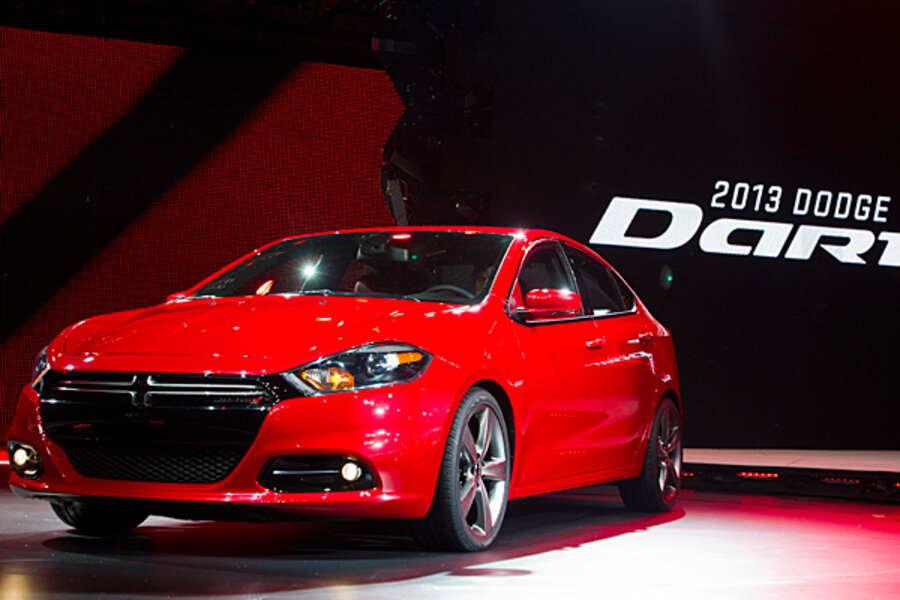Dodge Dart returns at Detroit Auto Show, 36 years after ceasing production
Loading...
| Chicago
The Dodge Dart has long held a place in automotive lore for its sleek, space-age design and 16-year run as Chrysler’s ultimate compact car, ending in 1976.
Thirty-six years after it ceased production, it’s back. On Monday at the North American International Auto Show [NAIA] in Detroit, Chrysler unveiled a resurrected Dodge Dart, which is now a compact, four-door sedan designed to target pragmatic buyers interested in low upfront costs and long-term fuel savings.
The refurbished Dart is a sign of shifting priorities set by the domestic US auto industry. While two bankruptcies and rock-bottom sales appeared to shake the foundation that General Motors, Ford Motor Co., and Chrysler once stood for – a reliance on large, gas gulping trucks and SUVs – the automakers appear to be directed to a steady comeback that is sustainable and tailored to what cash-strapped consumers ultimately want.
The combined sales of all three companies in 2011 increased US market share, the first annual increase since 1991. While all three enjoyed double-digit sales bumps, Chrysler had the greatest rate increase, jumping 26 percent over 2010, resulting in 1.4 million vehicles sold in the US alone.
The year-end numbers, released last week, are buoying this year’s NAIA, the largest in North America. It opens to the public Saturday and runs through Jan. 22 at the Cobo Center in downtown Detroit.
“The mood of the show is a lot better than it has been in the past. There’s a pretty strong sense of optimism,” says Jessica Caldwell, a senior analyst for Edmunds.com.
Foreign manufacturers’ market share shrank last year, primarily due to the earthquake and tsunami in Japan in March and the flooding in Thailand in November, resulting in production shutdowns for Toyota, Honda, Subaru, and other automakers. Since then, the domestic three in Detroit have unveiled vehicles they promise to market heavily this year with hopes to maintain their market strength.
How is this happening? Through an emphasis on having strong models in the compact and midsize segments, as much as the luxury, large trucks, and SUV segments that have sustained the industry for years.
“Today the automakers are intent on having big complete model portfolios, more than they had in the past. So if gas prices go to $4 a gallon, they are ready with cars that fit that need, and if gas prices go to $1 a gallon, you can still compete and not have to worry so much on external factors,” says Ms. Caldwell.
By the end of this year, all three automakers will have unveiled a range of compact and midsize vehicles.
Examples include the revamped, luxury-minded Ford Fusion, Chevrolet’s hybrid model of the Malibu Eco, and the Cadillac ATS, a compact sedan designed to compete with luxury brands from Mercedes and BMW. The hope is that the new models launched at NAIA will take advantage of slipping sales of the Toyota Camry and Honda Accord, two of the best-selling vehicles in the US market.
The US market is expected to continue growing this year. According to economists presenting at the annual Society of Automotive Analysts conference in Detroit Sunday, unit sales for light trucks and cars are expected to total between 13.5 million to 14 million; last year sales reached 12.8 million, a 10 percent increase from 2010.
Even though sales are growing in Brazil, India, and China, as well as in Europe, the US market is poised for the most significant growth due to pent-up demand, stiffening used car prices, and rising gas prices.







